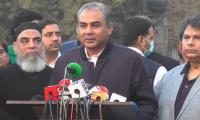Fact: Pakistanis are passing through extremely difficult times. Question: Can PM Imran Khan turn the economy around? Answer: Yes, PM Imran Khan can turn the economy around. After all, he’s the first prime minister in three decades whose personal agenda is aligned with our national agenda. To be certain, our public enemy number 1 is: unemployment. Here’s why:
Cars: In August 2018, a total of 15,389 units were sold. In August 2019, only 9,126 units were sold. Sales are down by a hefty 40 percent. Corolla’s sales are down 58 percent; Honda Civic is down 68 percent and Suzuki Wagon is down 71 percent. Honda, Indus and Suzuki directly employ 10,000 and with a job multiplier of 8 times for every direct job the auto sector as a whole employs 80,000 who in return provide for 536,000 (with an average family size of 6.7).
Trucks: In July-August 2018, a total of 1,199 units were sold. In July-August 2019, only 648 units were sold; a sales decline of 46 percent. Busses: In July-August 2018, a total of 217 units were sold. In July-August 2019, only 160 units were sold; a sales decline of 26 percent.
Tractors: In July-August 2018, a total of 7,831 units were sold. In July-August 2019, only 5,592 units were sold; a sales decline of 29 percent. Motorcycles: In FY2018, a total of 2.8 million units were sold. In FY2019, only 2.4 million units were sold; a sales decline of 13 percent. Resultantly, around 15 percent of the labour force has already been laid-off with more on the way. I hope the government intervenes before that happens.
Embroidery: In Faisalabad, around 4,000 embroidery units are on the verge of collapse. Resultantly, more than 200,000 workers will be left jobless. I hope the government intervenes before that happens.
Petroleum products: In July-August 2018, we imported 1.7 million tons. In July-August 2019, our imports stood at 0.9 million tons; a decline of 46 percent. This is the most definite sign of a sharp slowdown if anyone was still looking for one.
Universities in Sindh: Quaid-e-Azam University, Sindh University and Sindh Agriculture University have obtained loans from private banks to pay their utility bills and salaries to teachers. Has this ever happened before?
Textile: In July-August 2018, we exported goods worth $2.2 billion. In July-August 2019, our exports stood at $2.3 billion; a growth of 2.3 percent. The improvement in the current account deficit and the 2.3 percent increase in textile exports are the only good news to report.
The really bad news is that a million have already lost their jobs over the past twelve months-and if things continue the same way an additional million may lose their jobs in the following twelve months. The other bad news is that around five million Pakistanis have been pushed below the line of poverty over the past twelve months.
Here’s what needs to be done: India is slashing corporate income tax by a hefty 10 percent to stimulate employment. We ought to do the same – cut corporate tax rates (we have one of the highest corporate tax on the face of the planet). Next; interest rates must also be slashed to stimulate employment. Our top priority right now ought to be employment stimulation.
The writer is a columnist based in Islamabad.
Email: farrukh15@hotmail.com Twitter: @saleemfarrukh
There is no information if rowdy Pakistanis involved in such incidents were actually dual nationals
This year alone, US Treasury would have to roll-over $10 to $14 trillion in maturing short-term debt
Tear gas no longer marks just protest sites; it paints entire cities as battlegrounds but then again, PTI did it first
Political structures and governance systems have been central to economic and social development
It is confirmed now 40 Pakistanis had died after boat of migrants had capsized in sea near Greece
Many people believe that in future, AI will play an even more significant role in their lives







